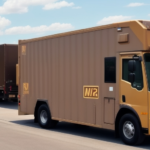Understanding FedEx Shipping Rates for Small Businesses
As a small business owner, you understand that shipping is a critical component of your operations. The quality and reliability of your shipping provider are essential to ensure that your customers receive their orders promptly and in good condition. FedEx is a popular choice among small businesses due to its extensive network coverage, service reliability, and competitive pricing. In this article, we will explore everything you need to know about FedEx shipping rates for small businesses.
How FedEx Shipping Rates are Determined
FedEx shipping rates for small businesses are determined based on several factors, including package weight, size, destination, and delivery timeline. FedEx applies different pricing models for various services like FedEx Ground, FedEx Express, and FedEx Freight. The shipping rates are calculated based on the greater of the dimensional weight or the actual weight of the package. Dimensional weight is calculated by multiplying the package's length, width, and height and dividing it by a dimensional weight factor, which varies depending on the service and destination. For instance, the dimensional weight factor for domestic and international shipments differs, impacting the overall shipping cost.
In addition to these primary factors, FedEx also considers the type of item being shipped. Certain items, such as hazardous materials or fragile goods, may require special handling and packaging, which can affect the shipping rate. FedEx offers additional services like signature confirmation, insurance, and special handling, which can be added to the shipping cost. It's vital for small businesses to carefully assess these factors when selecting a shipping service to ensure that their packages arrive safely and on time, while managing costs effectively.
Common Shipping Mistakes Small Businesses Make
Shipping mistakes can be costly for small businesses, impacting customer satisfaction and eroding profit margins. Some common mistakes include:
- Incorrect weight and dimensions: Miscalculating these can lead to additional fees or poor service selection.
- Using incorrect packaging: Inadequate packaging can result in damaged goods and increased return rates.
- Not using automated shipping tools: Relying on manual processes can lead to inefficiencies and higher costs.
- Failing to account for additional fees and surcharges: Overlooking these can result in unexpected expenses.
Another frequent error is improperly labeling packages. Clear and accurate labels with the correct shipping and return addresses, along with any necessary shipping instructions, are essential to prevent confusion and delays. Additionally, failing to track packages effectively can lead to lost or delayed shipments, frustrating customers and potentially losing business.
Strategies for Small Businesses to Reduce Shipping Costs
Reducing shipping costs without compromising delivery speed and reliability is essential for small businesses. Here are some strategies to help lower your FedEx shipping rates:
- Optimize packaging: Use lightweight yet sturdy materials to reduce dimensional weight costs.
- Utilize automated shipping tools: Save time and shipping costs by leveraging FedEx's automated solutions.
- Negotiate discounted rates: Based on your shipping volume and frequency, negotiate better rates with FedEx.
- Ship during off-peak times: Shipping during non-peak seasons or hours can result in better rates.
- Offer flexible delivery options: Options like in-store pickups can reduce shipping costs and enhance customer satisfaction.
Another effective strategy is to optimize your shipping routes. Efficient route planning can reduce the distance traveled and the number of stops, significantly cutting transportation costs. Additionally, consider partnering with other small businesses in your area to share shipping costs and resources, which can lead to substantial savings and foster community relationships.
Comparison of FedEx Shipping Rates with Other Carriers
Before selecting a shipping carrier, it's crucial to compare their rates, services, and delivery promises with other providers. FedEx offers various services like FedEx Ground, FedEx Express, and FedEx Freight. Comparing these with competitors such as UPS, USPS, and DHL allows you to choose the most cost-effective and reliable service for your business needs.
Consider the additional features and benefits each carrier offers. For example, FedEx provides a money-back guarantee on certain services, free packaging supplies, and discounts for frequent shippers. Conversely, UPS may offer a broader range of international shipping options and a larger network of drop-off locations. By evaluating these factors, you can make an informed decision about the best carrier for your business.
Tips for Negotiating Better Shipping Rates with FedEx
If your small business has a consistent shipping volume, you can negotiate better shipping rates with FedEx. Here are some tips to secure better rates:
- Highlight your shipping volume and frequency: Demonstrating consistent shipping can give you leverage.
- Emphasize your commitment: Show that a long-term partnership benefits both parties.
- Research fees and surcharges: Understand the structure and propose a customized pricing plan.
- Consider a third-party logistics provider: They can negotiate better rates on your behalf.
Negotiating better shipping rates not only reduces costs but can also enhance your overall shipping experience. A customized pricing plan ensures you pay only for the services you need, while a long-term partnership with FedEx can provide access to their expertise and resources, streamlining your shipping processes and improving efficiency.
Understanding the Different Types of FedEx Shipping Services
FedEx offers several shipping services tailored to the diverse needs of small businesses:
- FedEx Ground: Ideal for non-urgent, residential, and business deliveries.
- FedEx Express: Best for time-sensitive and urgent deliveries.
- FedEx Freight: Suitable for heavy and bulky items requiring special handling and delivery options.
In addition to these primary services, FedEx provides specialized solutions for specific industries. For example, their healthcare solutions offer temperature-controlled shipping for medical supplies and equipment, catering to the unique needs of the healthcare sector.
FedEx also supports international shipping with options for both small packages and large freight shipments. They have a team of experts to assist businesses in navigating the complexities of international shipping, including customs regulations and documentation requirements.
How to Choose the Best FedEx Shipping Service for Your Business
Selecting the right FedEx shipping service depends on your business's unique needs and requirements. Consider factors such as delivery timeline, package weight and size, destination, and delivery options to choose the most cost-effective and reliable service.
Another crucial factor is the level of tracking and visibility required. Some services offer more detailed tracking information, which is vital for businesses that need to closely monitor their shipments. Additionally, for businesses that frequently ship internationally, choosing a service that handles customs clearance and necessary documentation is essential.
Lastly, evaluate the overall cost of each shipping service, including any additional fees or surcharges. While the cheapest option may be tempting, it's important to balance cost with the level of service and reliability you need. By thoroughly assessing your options, you can ensure your shipments arrive on time and in good condition while keeping costs under control.
The Importance of Accurate Weight and Dimensions for Your Shipments
Accurate weight and dimensions are critical for determining shipping rates. Incorrect measurements can result in additional fees and surcharges, affecting your profit margins and customer satisfaction. Ensure you use a calibrated scale and measuring tape to obtain precise weight and dimensions for your shipments. Utilizing proper measuring tools can help maintain consistency and accuracy.
How to Use FedEx's Online Tools to Calculate Shipping Costs
FedEx provides online tools such as the FedEx Rate Finder and FedEx Zone Locators to help you calculate shipping costs accurately. These tools take into account the package's weight, dimensions, destination, and delivery timeline to provide an accurate shipping quote, enabling you to budget effectively and choose the most appropriate service for your needs.
Understanding Additional Fees and Surcharges that Affect Your Shipping Rates
FedEx applies additional fees and surcharges that can affect your shipping rates, such as fuel surcharges, address corrections, and package rerouting. Understanding these fees is crucial for accurate shipping budget planning and avoiding unexpected expenses. For detailed information, refer to FedEx's official surcharges page.
How to Prepare Your Packages for Shipment with FedEx
Proper packaging is essential to ensure that your goods reach their destination intact and undamaged. Follow these tips when preparing your packages for shipment with FedEx:
- Use sturdy packaging materials: Utilize corrugated boxes, packing tape, and cushioning materials to protect your goods.
- Label packages clearly: Ensure that each package is labeled with the recipient's address and contact information.
- Include necessary documentation: For international shipments, include a packing slip and invoice for customs clearance purposes.
- Follow FedEx packaging guidelines: Adhere to FedEx’s Packaging Guidelines to ensure your packages meet their requirements.
Tips for Tracking and Managing Your FedEx Shipments
Tracking and managing your FedEx shipments can ensure timely delivery and prevent lost or damaged packages. Here are some tips to effectively track and manage your shipments:
- Use FedEx's tracking tool: Monitor the status and location of your shipments in real-time through the FedEx Tracking tool.
- Sign up for notifications: Receive updates on delivery timelines and any exceptions by signing up for delivery notifications.
- Inspect packages upon delivery: Check packages upon receipt to ensure they are not damaged and match their packing slips.
The Benefits of Using a Third-Party Logistics Provider for Your Shipping Needs
A third-party logistics provider (3PL) can help streamline your shipping processes and negotiate better rates with carriers like FedEx. 3PLs offer value-added services such as warehousing, inventory management, and order fulfillment, allowing you to focus on your core business activities while optimizing your supply chain efficiency.
Case Studies: Success Stories of Small Businesses That Optimized Their FedEx Shipping Rates and Processes
Optimizing FedEx shipping rates and processes can significantly improve your business’s bottom line and customer satisfaction. Here are some case studies of small businesses that achieved success through strategic shipping optimizations:
- Case Study 1: XYZ Clothing Company reduced their shipping costs by 25% by negotiating better rates with FedEx and improving their packaging materials.
- Case Study 2: ABC Electronics streamlined their shipping processes by using FedEx's automated shipping tools, saving 30 hours per month in manual processing time.
- Case Study 3: DEF Industries enhanced their customer satisfaction by offering flexible delivery options and improved tracking tools, resulting in a 15% increase in repeat business.
By implementing these strategies, small businesses can optimize their FedEx shipping rates, reduce shipping costs, and enhance customer satisfaction.






















